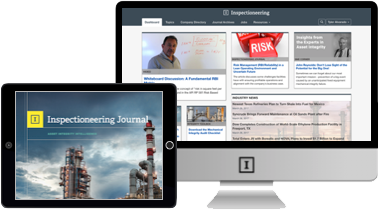Introduction
As turnaround inspection specialists, we participate in scheduled unit outages at various owner/user facilities. Each of these facilities, having their own collection of procedures and practices with years spent meticulously planning and preparing for these events. Input has been collected from all major organizational entities of the site (operations, maintenance, mechanical integrity, et al) and step-by-step work plans have been generated, including detailed inspection plans and repair scopes for each piece of equipment that will be serviced. Also included in these plans are forecasted budget growths and float times for discovery-related inspection findings on each piece of equipment. Major factors for determining allocations for growth are the review of visual inspection histories, thickness data, and operating conditions since the last inspection or maintenance event.
If a facility has a comprehensive and well-established mechanical integrity and reliability program that is effectively integrated across the site, damages and repairs can be predicted quite accurately. Occasionally, internal visual inspection of an owner/user’s assets may reveal damage or degradation that conflicts with historical trends and may have major ramifications on the budget or schedule. Typically, whenever a situation like this arises, an assessment team will be commissioned to evaluate the findings and develop a path forward
In this article, I will briefly discuss three common repair scenarios: (1) routine or anticipated, (2) scope repairs, and (3) major discovery, explaining why the major discovery scenario is so much different than the others. I will provide some insight into the organization, goals, and functions of the assessment team and discuss the turnaround inspector’s role and responsibilities in this evaluation process. Finally, I will address the potential pitfalls of an overly heightened sense of urgency that may occur when the added scrutiny of an assessment is applied to an inspection event.
Routine or Anticipated Findings
Most routine findings result from damages that are anticipated in a vessel based on its design, service, integrity operating windows (IOW’s), and historical trends. The issues are usually detected, quantified, and evaluated with inspection techniques that are specified in the detailed inspection plan. All repairs are addressed through the inspection work request (IWR) process based on a review of the inspection results. Involvement by an assessment team is typically not required; however, the owner/user inspector should be consulted. This may include items such as:
- Restorative weld metal build-up of locally corroded areas
- Excavation and weld repair of common service-induced cracking (e.g., deaerator cracking)
- Machining of nozzle or shell flange gasket-seating surfaces
- Repair or replacement of internal components (vortex breakers, baffles)

















Comments and Discussion
Add a Comment
Please log in or register to participate in comments and discussions.